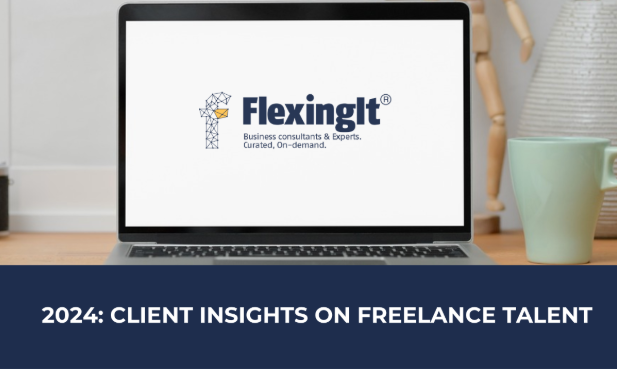Written by: Flexing It
7/03/2017
7 minutes read
![eye]() 20
20
![share]() 0shares
0shares
Women and long, successful professional careers – the two seem almost oxymoronic when seen in the context of the majority of Indian women. Women in India represent only 24% of the paid labor force, as against the global average of 40%, according to a recent McKinsey Global Institute report. Also, data from the Organisation for Economic Cooperation and Development (OECD) indicates that in 2014, China had one of highest female employment rates in the world at 70%, compared with 27% in India, for example.
Notions of equity aside, there is a clear economic advantage of greater women participation - if we can increase women’s labor force participation by 10 percentage points (68 million more women) by 2025, India could increase its GDP by 16 percent. Also, research shows that teams with gender balance tend to be more creative, more productive and more willing to share knowledge. A survey of Fortune 500 companies indicates that companies with higher female boardroom representation outperformed on various financial parameters like return on sales (ROS) and return on investment (ROI). Closer home, a recent study of the top 100 Indian companies (BSE 100) by Randstad shows that companies with women on their boards performed better.
It’s a challenging world for women
Setting up or crafting a successful professional career has many hurdles for women. A survey of women fromG20 countries, conducted by Ipsos MORI, revealed that there are five major issues for women in the workplace - Equal pay, Harassment, Career opportunities, Having children while building a career and Work-life balance.
Marriage is one of the first hurdles for women aspiring to build a career. In a much-publicized interview, Indira Nooyi, the CEO of PepsiCo, shared that when she came home to share the news that she was to be the president of PepsiCo, her mother immediately shot her down, telling her to leave her "crown in the garage" and go fetch the milk. The interview started a debate on whether women "can have it all", but the problem runs deeper. Women are often not empowered to make a free choice without being judged by a predetermined yardstick. A career tends to be seen as an indulgence until one "settles down" in marriage.
Having children is the biggest contributor to putting brakes on career progression. A recent Timesjobs survey indicates that 80 percent women considered leaving the job due to childcare issues. Women feel out of touch after returning from maternity leave, with most employers not being empathetic or outrightly rejecting requests for maternity benefits. The TimesJobs Survey also revealed that 45 percent of respondents had no support from their employers for managing parental responsibilities. Between 2008 and 2012, India’s labor courts received more than 900 complaints of denial of maternity benefits by employers. At the same time, most working women, when denied maternity benefits, simply stop working rather than going to court. A survey by industry body Assocham recently found that a quarter of Indian women give up their careers after having a baby. Also, the very long hours required to hold senior positions creates a conflict with the need to manage children.
Even for self-starters, the road is not easy. The IPSOS survey revealed that only 33% of women in the U.S. reported entrepreneurship was a level playing field, compared to 38% of women who agreed across the G20 countries.
And they don’t get rewarded for it
It is common knowledge that women’s median earnings have stubbornly remained below men’s for decades. The situation is starker closer home - India’s pay gap between men and women exceeds even the global average. According to Korn Ferry Hay Group, women in India earn 18.8 percent less than men, which is more than one percent higher than the global average of 17.6 percent
“It’s not that women are always picking lesser things in terms of skill and importance,” a recent University of Pennsylvania report says, “It’s just that the employers are deciding to pay it less.”Many differences that contributed to the pay gap have diminished or disappeared since the 1980s, of course. Women overall now obtain more education than men and have almost as much work experience. Women moved from clerical to managerial jobs and became slightly more likely than men to be union members. Both of these changes helped improve wage parity, the research said.
The situation is not very different for freelancers. According to the recent report “India’s top tier freelancers – What they earn” published by Flexing It, men and women command similar compensation levels till the Performer phase (less than 10 years of experience), women consultants in the Leader phase (10-20 years of experience) earn 30% less as compared to men in the same experience range. Moreover, representation of women professionals falls drastically in the Master phase (greater than 20 years of experience) to a meager 10% of all consultants. However, they command 40% higher professional fees as compared to men.
So, how are women creatively solving for this?
For professional women, the evolving on-demand economy is becoming a godsend. Lawyers, business executives, bankers, doctors, and many other professional women can continue to advance in their careers or at least stay in the game while being the kind of spouses or parents they want to be. The Indian Staffing Federation (ISF) says many women who took a break to spend more time at home are back looking for jobs as the current slowdown and high inflation pinch family budgets. This is especially true of the metros, where about 41% of women are getting back with flexible working options compared to 16-22% in smaller cities.
A few large private companies (Godrej, Accenture, Hindustan Unilever) and even the likes of Flipkart already offer long leaves to new mothers. “We have designed a programme specifically for stay-at-home women between the age group of 20-45,” said Deep Kalra, founder, MakeMyTrip.com. Some companies like Hindustan Unilever offer career breaks of up to five years to help objectives such as child rearing, studies or following a spouse who shifts location. It also offers a part-time work policy that supports job splits and job sharing.
In 2008-09, the Tata Group started the Tata Second Career Internship Programme (SCIP), calling upon women to take on a second career. Several other large companies have launched similar programs too, cases in point being Intel’s ‘Home to Office’ initiative, IBM’s ‘Bring Her Back’ program, SAP’s ‘Stay in Touch’ program, Philips’ ‘Back in the Game (BIG)’ program and GE’s RESTART program that focuses exclusively on hiring women scientists and engineers who have taken a career break and wish to get back to work. However, studies have revealed that while many such programmes exist, but most have not been implemented well to get the most women employees. According to a study done by Catalyst (commissioned by IBM), most of India Inc (75 percent) reported having flexible work programs, but many failed to track utilization of these programs. Of the companies offering flexible work programs, only a few reported greater than 25 percent utilization. A big reason for this is the absence of a market-maker that allows women and companies offering such programs to discover each other. Platforms like Flexing It are helping solve this gap by allowing companies to discover women candidates for such programs and helping women looking to come back into the professional world finding such opportunities, across both large and small organizations.
As the freelancing economy in India matures and more and more women start realizing the potential and benefits of restarting their careers, the trend will only go northwards. The new professional engagement models will also lead to improvement in the gender gap in pay and enable women professionals with freedom in personal and professional commitments. Here’s to more women power!








 `
`  20
20
 0shares
0shares





